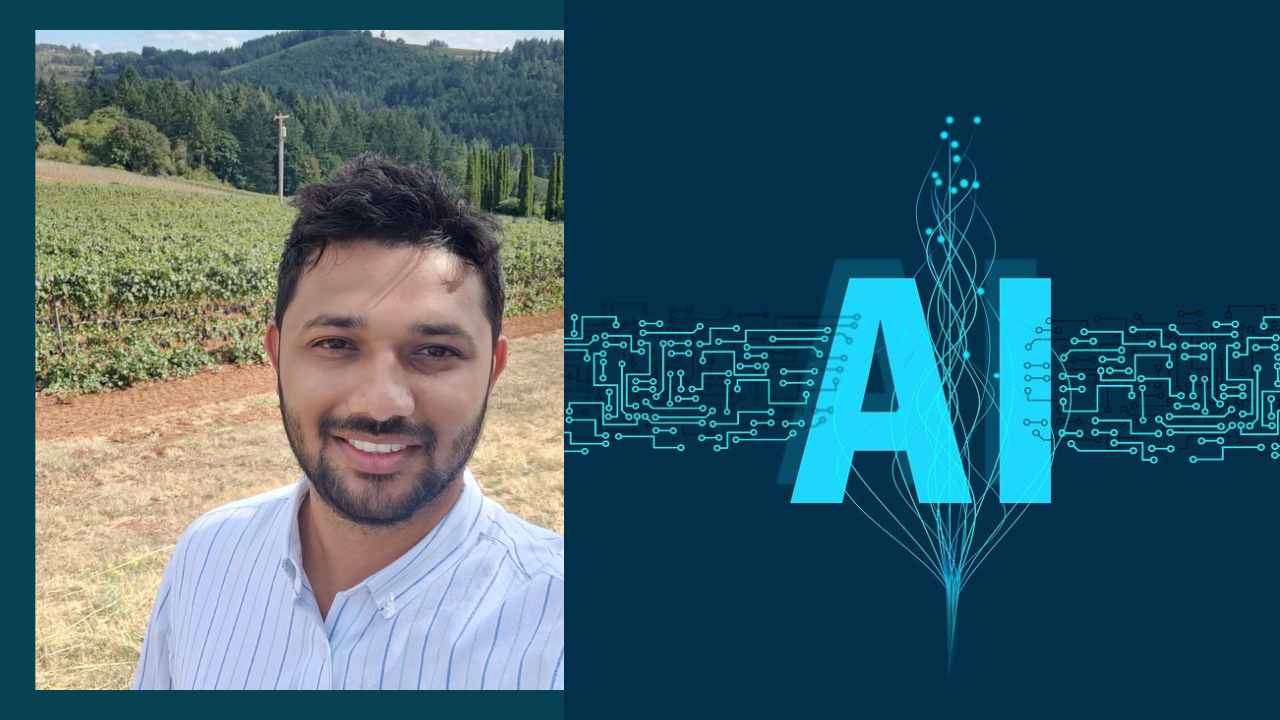
Growing up seeing the traditional methods used in agriculture, Nithin B Patil, observed how farmers most of the time end up wasting resources. It was then, that he decided to explore artificial intelligence (AI) in agriculture to maintain accuracy while using resources such as water and crop protection chemicals.
Nithin is a viticulturist with a Ph.D. in Plant Pathology who has worked for various grape wine companies and helped them increase their profits using artificial intelligence. Currently, he is the senior manager at Grover Zampa Vineyards, a wine-making company based in Bengaluru, Karnataka.
In an interview with Krishi Jagran, Nithin discusses various uses of AI in agriculture. Here are the excerpts from the interview. Read On.
1. What are the various ways in which farmers can use AI tools?
The major problem in farming is being unable to predict the weather. AI tools can help in knowing the weather around 15 days prior. This helps a farmer know when to irrigate their land and use crop protection. There are plenty of AI tools and sensors that tell the moisture level of soil. If the soil has adequate moisture, a farmer need not put more water into the farm.
2. Can all farmers use tools and sensors?
Various apps send weather updates on your phone. Even a lay farmer can go through the messages and act accordingly. However, soil sensors are expensive and a small or marginal farmer may not bear its cost. The farmers can form a group and buy subscriptions to these AI sensors and suffer the cost collectively. For farmers who are cultivating high-value crops such as pomegranate, papaya, and grapes, it is easier for them to fix these sensors in their farms.
3. How can farmers make a profit out of using these tools?
There is a huge water scarcity in India, and many farmers pay for water tanks to irrigate their lands. By using these AI tools, they can predict rainfall and wait for it, not wasting water on their lands. This, in turn, will save them a lot of money, eventually increasing their profits. Similar goes for crop protection. A farmer, knowing that it is going to rain, will not use chemicals immediately but wait until the rain stops.
4. Do you think Indian farmers are ready to accept AI in their fields?
Definitely! Everyone today is looking for more sustainable methods to grow crops. Alongside training in AI, farmers should also be aware of the water and pesticide resistance of their crops. For instance, there is a grape variety called tempranillo that can withstand high water stress conditions, even 300-350 centibars, while there is another grape variety called muscat which cannot tolerate soil moisture beyond 200 centibars. In such conditions, a farmer should be patient and use AI and resources carefully.
5. What are some challenges in using AI in agriculture?
There are certainly some trials involved in using AI in agriculture such as when soil sensors stop working, a farmer must wait for days to make it work. Also, weather predictions sometimes come out incorrect.
6. Do you think AI in agriculture can become the next big thing in India?
More than 50% of people in India work in the agricultural sector. Considering most of them are small and marginal farmers, cheaper options should be available in the market. Farmers can use government AI tools such as Kisan-e-Mitra for starters. Also, the government should fund more startups working in this sector, and organize campaigns to compel farmers who are rigid to use these tools. By investing in developing technologies such as monitoring of farms through satellite and sap flow sensors—an AI tool used to understand the movement of water in roots, stems, and leaves of a plant— brought from developed countries, India can escalate its growth in the agriculture sector.
















